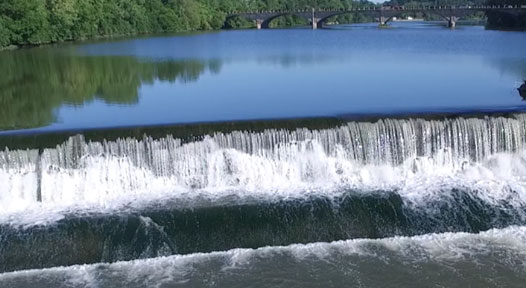The beginning of spring means northern Indiana residents will be spending a lot of their time on the water soon. Local water safety advocates like the Indiana Silver Jackets, The Pelorus Project, and the Hoosier Canoe and Kayak Club are reminding of the dangers of low head dams that can potentially be life-threatening if someone gets stuck in one.
In July of 2017, several lives were lost in just one weekend as kayakers were unaware of the circulating currents beneath them. Even those wearing a life vest can fall victim to low head dams.
Indiana Department of Natural Resources Division of Water Assistant Director Ken Smith tells PBS that low head dams are so dangerous that they’ve earned a scary nickname.
“One of the phrases that I’ve often heard used to refer to the structures is ‘drowning machines’. They don’t call them ‘drowning machines’ for no reason,” he explains.
IUPUI Research Scientist Robert C. Barr explains why they pose such a threat for people in the water.
“What makes these low head dams so deadly is the hydraulic jump that occurs as the water breaks over the surface of the dam, drops down, and it develops…a spinning, like a washing machine, at the bottom of that– a circulating current.”
Conservation officers say there’s been an uptick in deaths near low head dams, including 30 incidents with more than 20 deaths in the past decade.
The Indiana Department of Homeland Security says 10% of the state’s drownings are dam-related. In fact, the state ranks 10th in the U.S. for people who have died in low head dams.
Signs are posted at some of the dam locations, but many are not labeled because they’re on private property.
You can find a map of the known low head dams in Indiana waters from the DNR: http://bit.ly/2u6gnUc





